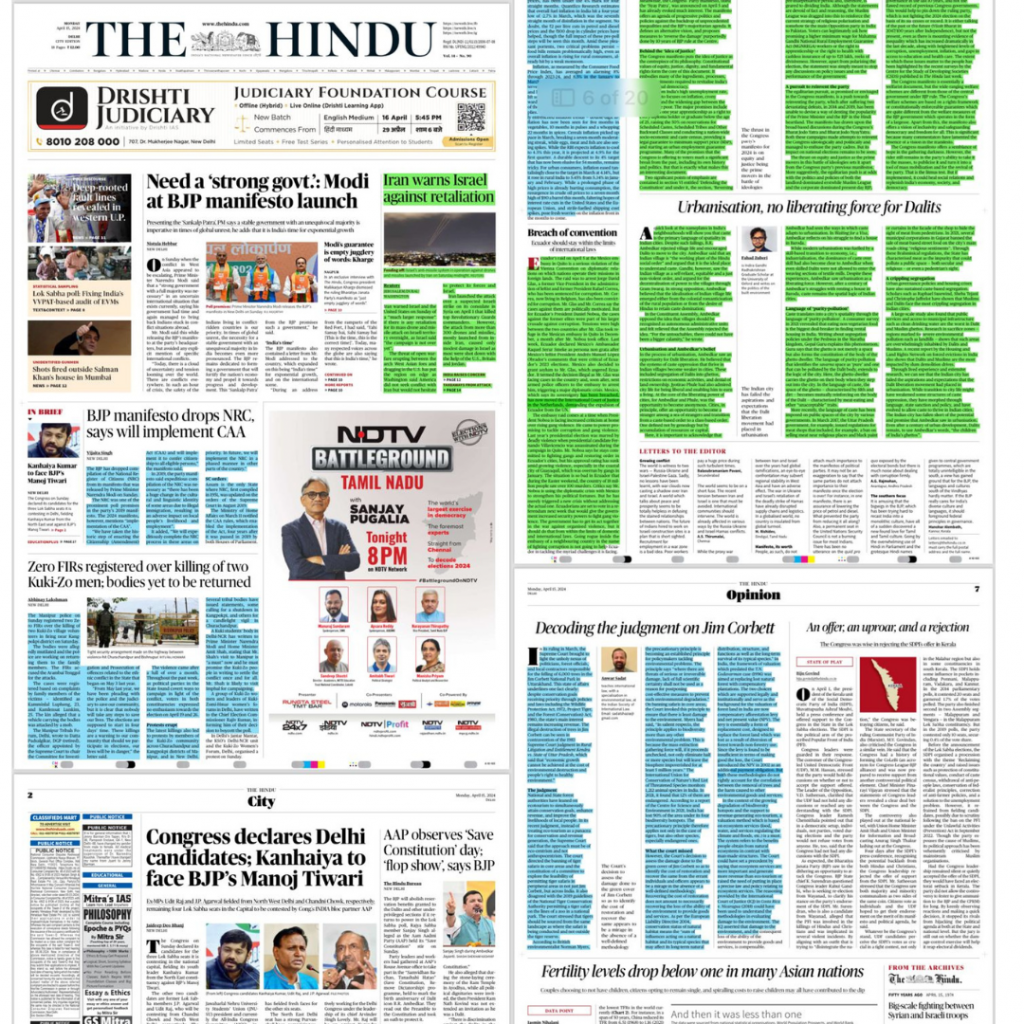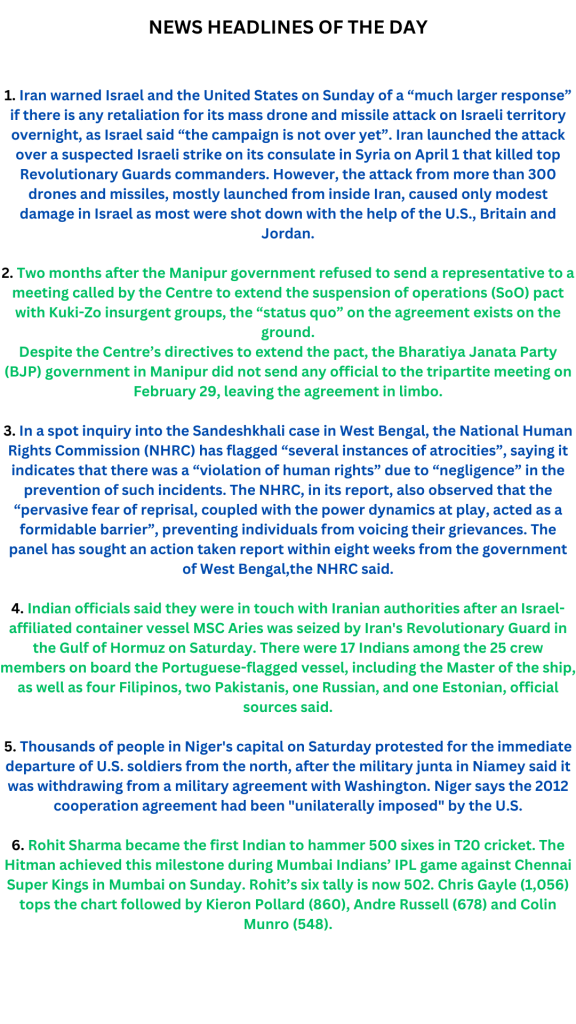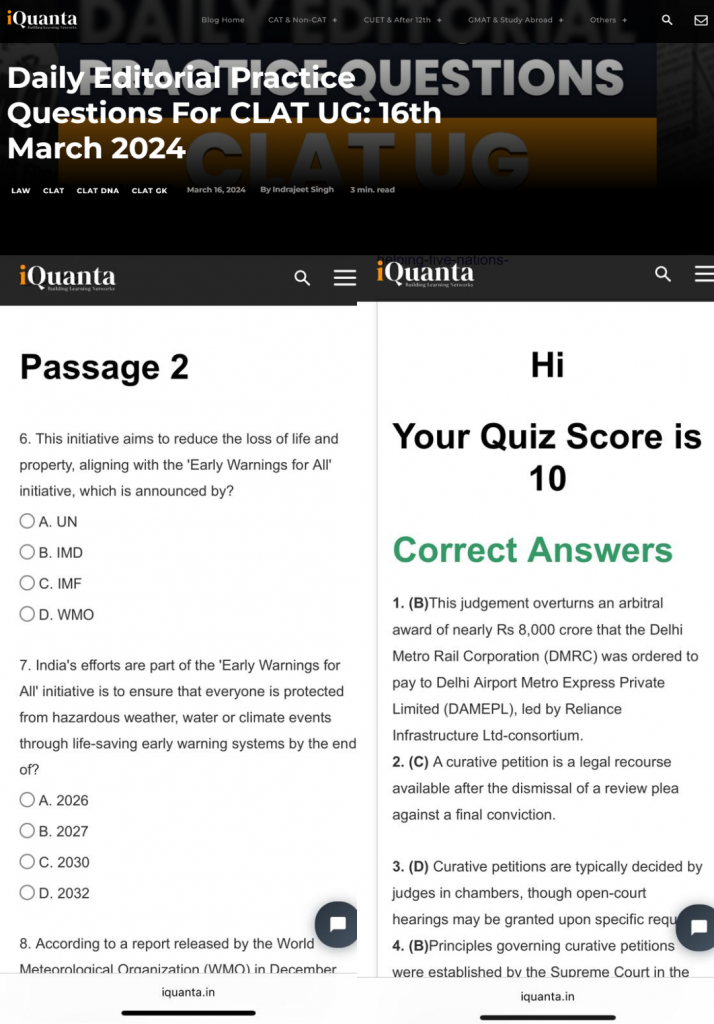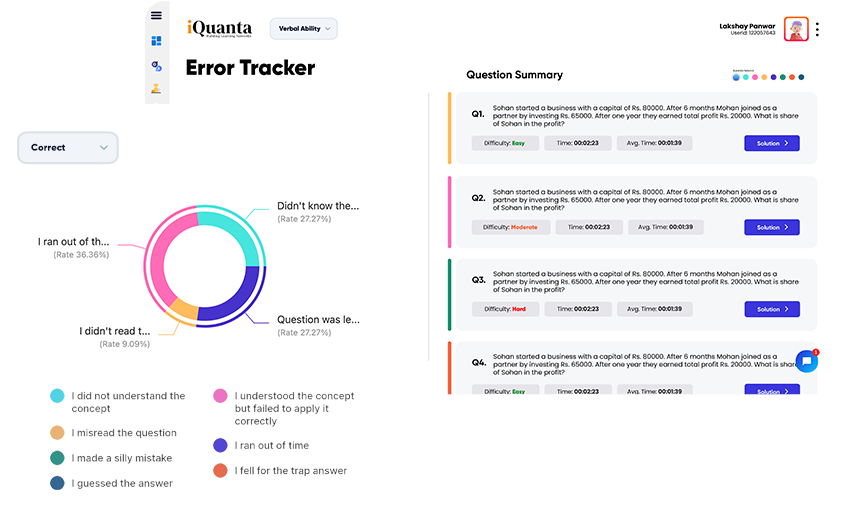This article talks about current affairs for CLAT, provides insights of the CLAT current affairs section, and the paper pattern of CLAT current affairs section. You will discover how and where to prepare, understand the do’s and don’ts, identify the right sources, and find practice questions tailored to the section of current affairs for CLAT.

What is CLAT?
The Common Law Admission Test, commonly known as CLAT, is India’s premier law entrance examination. It is a national-level test conducted by the Consortium of National Law Universities for admissions into law programs. Twenty-four National Law Universities use the CLAT scores to admit students into their five-year LLB programs, and 21 of these universities also consider these scores for their LLB and LLM postgraduate courses. Additionally, several other law colleges across the country accept CLAT scores for entry into undergraduate and postgraduate law courses.
This article will tell you about the current affairs section for CLAT in detail and will also tell you about how to prepare current affairs for CLAT along with sample questions that appeared in the CLAT exam.
After reading this article you will know everything about current affairs for CLAT.
Also Read: CLAT Preparation Strategy
Current Affairs for Clat: Exam Pattern
Before talking about current affairs for CLAT, let us first discuss the exam pattern of the CLAT current affairs exam.
| EXAM FEATURE | CLAT |
|---|---|
| Exam Duration | 120 minutes |
| Exam Mode | Paper-based |
| Exam Medium | English |
| Syllabus | English Logical Reasoning Current Affairs Quantitative Techniques Legal Reasoning |
| Total number of questions | 120 |
| Total number of marks | 120 |
| Marking scheme | +1 / -0.25 |
Absorb the exam pattern and accordingly practice current affairs for CLAT.
Current Affairs for CLAT: Syllabus
While talking about the current affairs for CLAT, let us talk about the syllabus and the topics that are important for CLAT current affairs section.
| Total Weightage | 25% |
| Syllabus | 1. National & International Affairs. 2. Schemes. 3. Science & Technology. 4. Summits & Conferences. 5. Sports. 6. Awards & Honors. 7. Arts & Culture. 8. Important Historical Events |
Although these are just the topics, there is no such syllabus for the CLAT current affairs. Anything from anywhere can come. You just need the right strategy and the right source to prepare from. While preparing for current affairs for CLAT exam, you need to identify the topic type of the CLAT exam pattern that you will get from the previous year’s question papers.
Current Affairs for CLAT: Preparation Strategy
While talking about the current affairs for CLAT, let us talk about the preparation strategy to crack CLAT current affairs section.
It is very important to know how to prepare current affairs for CLAT. If you do not know the correct way to prepare the current affairs for CLAT, then it would be difficult to score well in CLAT current affairs section.
Let us discuss the preparation strategy of current affairs for CLAT exam.
1) Be Consistent
While talking about current affairs for CLAT, let us discuss ways to score well. It is always advised to be consistent while preparing for the current affairs for CLAT exam. Because current affairs is a section that you cannot learn in just one day or just a few months. If you won’t be consistent the whole year, then it will be difficult for you to revise later.
So, it is always advised to start preparing this section for at least one year before the CLAT exam. Start covering topics daily, weekly basis, and monthly basis.
2) Make separate files
Let us understand how to prepare current affairs for CLAT by preparing notes.
When preparing notes, students often make the mistake of recording all current affairs topics in one notebook. This approach can lead to confusion during revision, as different subjects become jumbled together. Your current affair for CLAT exam will be prepared nicely.
A more organized method is to use A4 size sheets and create separate files for each topic. For instance, maintain distinct files for international news, national news, science, technology, sports, economy, culture, heritage, etc. This way, each subject is neatly compartmentalized, making it easier to locate and review information when needed. Follow this technique and your preparation of current affairs for CLAT will be a lot better.
With this technique, you will have multiple files. This will also help you to add some extra additional information if needed. You will have a sorted way to revise when exams are near. By doing this your preparation of current affairs for CLAT exam will boost.
3) Daily, Weekly and Monthly Analysis
To prepare current affairs for CLAT, you must cover news on a daily basis, weekly basis, and on a monthly basis. By this, it means that cover the news on a daily basis, then a weekly basis, and then a monthly basis.
You can watch YouTube, read newspapers, and take quizzes to prepare for CLAT current affairs.
iQuanta offers a daily quiz, providing detailed highlights from newspapers and key news updates each day. This will assist you in your daily preparations and is available at no cost. Yes, Free of Cost All you need to do is join our WhatsApp group for free to access these benefits. Click here to get the WhatsApp link. Join WhatsApp to prepare for the current affairs for CLAT exam.



Here, you can see the outlet about how things work. Now you can think of how this will help you to prepare current affairs for CLAT.
4) Prepare notes on your own
While preparing for current affairs for CLAT, you will get a lot of notes readily available online and even offline. But make sure you prepare the notes on current affairs for the CLAT exam. When you prepare notes on your own, you will write and in your subconscious mind, you will remember things for a longer run. Your preparation for CLAT current affairs will boost.
It may seem like you are wasting time initially, but when you revise later, you’ll realize it was very helpful. Prepare notes of static and dynamic GK separately. Overall, your preparation of current affairs for CLAT will boost.
Get CLAT Online Coaching!
Current Affairs for CLAT: Right Sources
While preparing current affairs for CLAT, you have to list down some important sources for good preparation. Let us see some right sources for your CLAT preparation.
1) Newspapers
It is quite obvious that to prepare for current affairs for CLAT exam, you should read newspapers daily. But the problem arises is WHICH NEWSPAPERS?
Two newspapers are really helpful for the preparation for the current affairs section for CLAT exam.
- The Hindu
- The Indian Express
To prepare current affairs for CLAT exam, these two newspapers are really good from the point of the CLAT exam. If you do not have time to read newspapers daily, then at least do a weekly analysis of the newspaper. Reading newspaper will not only help you to get the knowledge of correct affairs for CLAT, but you will also improve your critical reasoning and English as well.
2) Magazines
Along with newspapers, magazines are equally important to read to prepare current affairs for CLAT. Now these magazines or books contain a lot of general knowledge questions and current affairs. Some of the books and magazines that help prepare current affairs for CLAT are:
- Manorama Year Book
- Lucent
- Arihant
- Samanya Gyan
To prepare current affairs for CLAT exam these books are good, but if you have some other books you can refer to those also. Just make sure that the content is right and relevant.
3) Compendiums
While preparing current affairs for CLAT exam, Compendium is useful. A compendium is like a book that contains all the relevant and important information and news with detailed explanations. This can be very helpful for covering the news effortlessly.
4) Coaching Institute
While preparing current affairs for CLAT, it is very important to join a coaching. Coaching is really helpful in many ways for your CLAT preparation. The effort of searching for the right content will be a lot less once you join a coaching institute. Coaching will provide you with correct and relevant material that will help you with your preparation for the CLAT exam.
Join iQuanta for the best law coaching in India. Here you will be provided with the correct material, live classes, 24/7 doubt-solving, application classes, mock tests, and mock analysis. You can join the WhatsApp group for daily updates.
Get CLAT Online Coaching!

Current Affairs for CLAT: Do’s and Don’ts
While talking about current affairs for CLAT, let us talk about some do’s and don’ts that you should follow to prepare for current affairs for CLAT exam.
| DO’S | DON’TS |
| Read newspapers daily and revise at least weekly or monthly. | Don’t waste time reading passages in the question papers. Most of the questions are independent and there is no need to look at passages. |
| In the last few months, revised the notes. Focus on revising | Do not ignore your notes. |
| Stick to sources that you have and revise the notes daily or regularly | Do not look for new sources after every month. |
| Start as early as possible | Do not waste time unnecessarily. |
| Be consistent | Do not lose hope |
Follow all these suggestions and then apply them in your preparation and while taking the exam. Your headache of current affairs for CLAT exam will be a lot less after reading this article.
Current Affairs for CLAT: FAQs
While talking about current affairs for CLAT, let us talk about the frequently asked questions also known as FAQs about the CLAT exam and especially about the section – current affairs for CLAT exam.
Q1) How many months should we cover?
Ans 1) To prepare current affairs for CLAT, you should ideally start preparing for the current affairs section at least one year in advance. However, it’s important to make notes; otherwise, it would be difficult to remember a whole year’s worth of news. Therefore, the ideal preparation time is one year.
Q2) Where should we cover from?
Ans 2) Current affairs is a subject that should be tackled daily in small portions. Therefore, it is advisable to study it daily. To prepare current affairs for CLAT, you can refer to newspapers, magazines, and current affairs books for information.
Q3) Which book should we buy for current affairs?
Ans 3) To prepare current affairs for CLAT, you should read newspapers such as The Hindu and The Indian Express. Additionally, you can refer to magazines like the Manorama Yearbook and Lucent. There are many other books and magazines available; just ensure that their content is current, relevant, and up-to-date. Books are advised to refer for static GK. For dynamic GK (changes over time), you should focus on daily newspapers and newspaper analysis. So, read these books to prepare the current affairs for CLAT exam.
Q4) What topics to cover from and in how much depth?
Ans 4) To prepare for current affairs for CLAT, Static GK is extremely important from the perspective of the CLAT exam. It’s beneficial to delve deeply into any topic in a practical manner and connect it to current events. For example, if you read about Gaza and Hamas, you should also study the history of both parties and understand how things started. Be sure to read every related topic. Don’t view current affairs as a burden; instead, enjoy learning about them. Staying up-to-date will boost your confidence, and you’ll be able to participate in almost any conversation.
Then comes the topics that you should cover. So here is the list of high-priority and Moderate-priority. Follow these advises to prepare current affairs for CLAT exam.
| High Priority | Moderate Priority |
|---|---|
| National News | Solely international current affairs |
| International current affairs with national relevance | |
| Topics that are frequent in the news |
These were some top FAQs asked by CLAT aspirants while preparing current affairs for CLAT exam.
Current Affairs for CLAT: Mock Tests
While talking about the current affairs for CLAT, let us talk about the mock tests for the CLAT exam and its importance.
It is very important to take mock tests for the current affairs for CLAT exam. Mock tests contain many questions, and there is a high likelihood of encountering the same question repeatedly, which could also appear in the actual CLAT exam.
Therefore, it should be a top priority to take mock tests for the current affairs section. Static GK is less extensive compared to dynamic GK. The more you attempt mock tests, the better you will remember the information for the long term. So, attempt as many mocks as you can to prepare current affairs for CLAT exam.
Current Affairs for CLAT: Mock Test Analysis
While talking about the mock tests of current affairs for CLAT, let’s us talk about the mock test analysis.
More than just taking mock tests, analyzing them is crucial. You should develop a habit of reviewing your mocks. It’s okay to make mistakes, but it’s important to analyze them and correct them for next time, whether in mock tests or in the exam.
Write down any questions you skip or answer incorrectly in a notebook and review this notebook daily.
To prepare current affairs for CLAT, iQuanta provides the best mock analysis, as it utilizes specialized AI techniques to perform this analysis. It will give you detailed insights into your problems, showing exactly where you should focus and where you are lacking. This helps you prepare better not just for the current affairs section, but overall. Click here to get the link for the best AI-based mock analysis.
So do take as many mocks and invest your time in mock analysis to prepare current affairs for CLAT exam.

This is what the mock test analysis looks like. You should try to score in current affairs for CLAT.
Current Affairs for CLAT: Practice Questions
While talking about current affairs for CLAT, let us practice some questions of the current affairs of CLAT 2024.
Ques I. On 7th October 2023, an armed conflict broke out between Israel and Hamas-led Palestinian militants from the Gaza Strip[o] after the latter launched a multi-pronged invasion of southern israel. After clearing Hamas militants, the israeli military retaliated by conducting an extensive aerial bombardment campaign on Gazan targets and followed up with a largescale ground invasion of Gaza. more than 1,400 israelis, mostly civilians, and more than 10,000 Palestinians have been killed in the fighting. Over 240 Israelis and foreign nationals were taken hostage and brought into the Gaza Strip. the Hamas-led attack began in the morning of 7th October, as Palestinian militants in Gaza launched a barrage of over 5,000 rockets against israeli cities and kibbutzim while some 3,000 Palestinian militants breached the Gaza-israel barrier. Over 1,000 israeli civilians were killed in more than a dozen massacres, including the re’im music festival massacre, and military bases were attacked. Over 200 civilians and israeli soldiers were captured or abducted and taken to the Gaza Strip. At least 44 countries, mostly from the Western world, characterized the massacres of civilians as terrorism. Hamas declared that the invasion was carried out in response to the ‘‘desecration of the Al-Aqsa mosque’’, the Gaza Strip blockade, the construction of israeli settlements, and israeli settler violence against Palestinians in the West bank. israel declared a state of war on 8th October, and its response to the attack has seen the most significant military escalation in the region since the Yom Kippur War. The current hostilities constitute the fifth war of the Gaza–Israel conflict, which is part of the broader IsraeliPalestinian conflict. In 2023, before the offensive started, an uptick in Israeli–Palestinian violence saw at least 247 Palestinians, 32 israelis, and two foreigners killed. According to the Gaza Health ministry, as of 6 November, over 10,000 Palestinians had been killed, including 79 UNRWA staff. Israel dropped a total of 6,000 bombs during the first six days of the conflict—nearly double the number of bombs dropped by the American-led CJTF—OIR in one month during the War against the islamic State. there has been widespread killing of civilians, and human rights groups and a panel of united Nations special rapporteurs have accused both israel and Hamas of war crimes. (CLAT current affairs section 2024)
Ques 1. What was the reason for Hamas-led Palestinian militants’ attack on Israel?
- (A) to retaliate against Israeli settler violence against Palestinians
- (B) in response to the desecration of the Western Wall
- (C) to protest against the construction of Palestinian settlements in the West Bank
- (D) to seek an end to the Gaza Strip blockade
Ques 2. What was the reaction of the international community to the killing of Israeli civilians?
- (A) Condemned as terrorism by 44 countries
- (B) ignored by most of the countries
- (C) Supported by the UN
- (D) Praised as a necessary measure by 10 countries
Ques3. Which of the following is not true about the historical context of the Israel Hamas Conflict?
- (A) the Palestinian refugees started settling under Ottoman rule in the late 19th Century
- (B) Hamas emerged during the first Intifada in the late 1980s
- (C) Hamas was formally known as the Islamic resistance movement
- (D) First intifada was a Palestinian uprising against Israeli rule.
Ques4. What has been the response of the Israeli military to the Hamas-led attack?
- (A) declared a state of war and launched a ground invasion
- (B) Conducted an aerial bombardment campaign only
- (C) Asked for international intervention
- (D) Captured and imprisoned the militants responsible
Ques5. What is the current hostilities known as in the Gaza-Israel conflict?
- (A) Sixth war
- (B) Fifth war
- (C) Seventh war
- (D) Fourth war
Ques6. Which major war does the current Gaza-Israel conflict resemble?
- (A) Yom Kippur War
- (B) Six-day War
- (C) Iraq War
- (D) Gulf War
Ques II. On 26th January 1950, we are going to enter into a life of contradictions. in politics, we will have equality and in social and economic structure, continue to deny the principle of one man one value. How long shall we continue to live this life of contradictions? How long shall we continue to deny equality in our social and economic life? if we continue to deny it for long, we will do so only by putting our political democracy in peril. We must remove this contradiction at the earliest possible moment else those who suffer from inequality will blow up the structure of democracy, which this Constituent Assembly has so laboriously built up. i feel that the Constitution is workable, it is flexible and it is strong enough to hold the country together both in peacetime and in wartime. indeed, if I may say so, if things go wrong under the new Constitution, the reason will not be that we had a bad Constitution. What we will have to say is that man was vile? the third thing we must do is not be content with mere political democracy. We must note that our political democracy cannot last unless there lies at the base of social democracy. What does social democracy mean? it means a way of life, which recognizes liberty, equality and fraternity as the principles of life……however, good a Constitution may be, it is sure to turn out bad because those who are called to work it, happen to be a bad lot. However, bad a Constitution may be, it may turn out to be good if those who are called to work it, happen to be a good lot. the working of a Constitution does not depend wholly upon the nature of the Constitution. [excerpts from Dr. Ambedkar’s address to the Constituent Assembly, 25 November 1949]. (CLAT current affairs section 2024)
Ques1. What is the life of contradiction referred to here?
- (A) that of equality in politics but inequality in social and economic structure
- (B) that of inequality in politics but equality in social and economic structure
- (C) that of inequality in social structure but equality in economic structure
- (D) that of equality in politics and economic structure but inequality in social structure
Ques2. What will happen, according to Dr. Ambedkar, if we continue to deny equality in our social and economic life?
- (A) there will be no injustice
- (B) Our political democracy will be in danger
- (C) equality in social and economic life will be achieved nevertheless
- (D) Our social and economic life will be in peril
Ques3. What might be the cause, according to dr. Ambedkar, if things go wrong under the new Constitution?
- (A) that the Constitution was ignored
- (D) that the men called upon to work the Constitution were good
- (C) that the men called upon to work the Constitution were not good
- (D) that the Constitution was bad and failed the people
Ques4. What does social democracy mean?
- (A) equality before the Law
- (B) equality in social life
- (C) equality of opportunities
- (D) equality in economic life
Ques5. When does a bad Constitution turnout to be good?
- (A) When the people called upon to work it are good
- (B) When the people called upon to work it are bad
- (C) When the Constitution is amended
- (D) None of the above
Ques6. Which of the following statement is not correct about what Dr. b.r. Ambedkar feel about the Constitution?
- (A) the Constitution is workable
- (B) The Constitution is flexible
- (C) the Constitution is strong enough to hold the country together in peacetime only
- (D) the Constitution is strong enough to hold the country together both in peacetime and in wartime
Try to attempt these questions and understand what is your level of understanding and preparation. To get the answer to these questions, you can join our WhatsApp group and ask questions there.
Follow the guidelines and suggestions mentioned above to ace current affairs for CLAT exam. You will definitely score well and will get admission in top NLU’s. Just be confident and believe in yourself.
Preparing current affairs for CLAT is not difficult, you just need a right guidance from an experienced person or a coaching and a right source. As an experienced person will know the all the insights of current affairs for CLAT.





